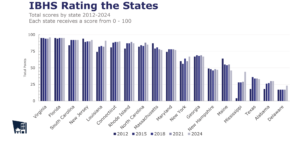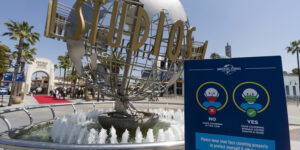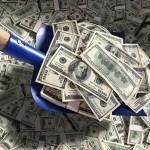Former American International Group Inc. Chief Executive Officer Edward Liddy defended his role as the government-tapped leader of the company at the time of a 2008 bailout, saying he took the job to help his country and protect shareholders.
Without taking an $85 billion loan from the Federal Reserve Bank of New York at steep terms, which now face a legal challenge from then-largest AIG shareholder Maurice “Hank” Greenberg’s Starr International Co., the insurer would have wound up in bankruptcy and stockholders “would have been wiped out,” Liddy told a government lawyer today in Washington federal court.
Starr accuses the government of illegally taking 80 percent of its stock in consideration of the bailout loan. The U.S. also broke the law by taking control of the company, Starr contends.
Liddy said he focused on repaying the loan and tried to return the insurer and its subsidiaries to financial health.
“I did not want to have a wounded animal that died a slow, painful death,” he said under questioning by J.J. Todor, the government lawyer. “These businesses are fit to fight and they’re doing very well.”
Recruited at the behest of then-Treasury Secretary Henry Paulson, Liddy said he accepted less than $1 in compensation during the 11 months he led the insurer and did so to “help the country.”
Government Influence
Starr’s lawyer David Boies questioned Liddy yesterday over the influence of Federal Reserve or U.S. Treasury Department officials on his decision-making.
Liddy testified he chose not to buck government overseers and that developing a trust with regulators was for the “benefit of AIG.”
The U.S. had a hand in everything from vetting press releases to selecting AIG board members, according to testimony and documents introduced into evidence by Boies this week.
The AIG board voluntarily accepted the terms of the deal and its only alternative was bankruptcy, the government contends. A bailout was needed to prevent catastrophic damage to the economy, according to Kenneth Dintzer, a Justice Department lawyer.
“The goal was not to save AIG,” Dintzer said in opening statements on Sept. 29 in federal court in Washington. “The goal was to save the world from AIG.”
Reverse Split
Under questioning by Boies this morning, Liddy testified that he supported a reverse 20-1 stock split in 2009 to boost AIG’s lagging share price.
“We were in danger of being de-listed by the New York Stock Exchange. I didn’t want that to happen,” he told Boies.
Starr contends that the reverse split was engineered to reduce the number of issued shares while leaving untouched authorized shares controlled by the government, giving it voting control.
Boies asked Liddy, as an experienced businessman and former head of the Goldman Sachs board audit committee, if he’d ever heard of a reverse split that applied only to issued shares
“I just didn’t focus on those mechanics,” Liddy testified.
Boosting the share price “was the only reason I wanted it done” he told the court.
Goldman Board
Liddy, a former CEO of Allstate Corp., was serving on Goldman Sachs Group Inc.’s board when, according to his testimony yesterday, he was recruited to the AIG post by Christopher Cole, at the time the head of Goldman Sachs’s investment banking unit.
“Did you think that there was anything unusual or strange about having the chairman of the investment banking division of Goldman Sachs be the first person to call you, to ask you if you would become CEO of AIG?,” Boies asked.
“I did not,” Liddy replied. He said he’d known Cole for 20 years and presumed that then-Treasury Secretary Henry Paulson, a former Goldman Sachs CEO, wanted “someone to make the initial contact that I knew well.”
Another former Goldman Sachs executive, Ken Wilson, who was serving as an adviser to Paulson, also urged him to take the position, Liddy told the court.
Starr contends the government wanted control of AIG’s assets to facilitate a “backdoor bailout” of the New York- based insurer’s investment bank trading partners, including Goldman Sachs, and that it manipulated the company’s governance to avoid a shareholder vote on the rescue package.
Counterparty Funds
Goldman Sachs was described, in congressional testimony introduced into evidence, as receiving $12.9 billion from AIG, the largest payout of counterparty funds from the insurer.
Goldman Sachs also was involved in a last-ditch private sector effort to bailout AIG days before the New York Fed agreed to make the rescue loan.
Liddy said he agreed to serve as AIG’s CEO on Sept. 16, 2008, the first day of the bailout.
He replaced Robert Willumstad, whose resignation was a condition of the rescue.
Boies sought to show that Liddy was acting as CEO before he was confirmed by the AIG board on Sept. 18.
The lawyer confronted Liddy with talking points for a town hall meeting with AIG executives e-mailed on Sept. 17 to Sarah Dahlgren, an official with the Federal Reserve Bank of New York charged with monitoring the insurer. Dahlgren earlier testified that Liddy had requested them.
“I don’t remember them,” Liddy said.
Liddy testified that he didn’t meet with AIG managers until Sept. 18, after he was “duly appointed chairman and CEO.”
Town Hall
Although the details of the bailout loan weren’t fully fleshed out until Sept. 22, Liddy said he felt AIGhad a binding agreement with the Fed on Sept. 16, because funds were “flowing.” The government provided AIG with $14 billion that night, according to earlier testimony.
A term sheet approved by regulators on Sept. 16 “is what gave rise to the arrangement between the Federal Reserve and the company,” Liddy said. The loan had many “to-be-determined” elements before it was completed on Sept. 22, he said.
When asked about some of the details of the loan, such as a provision for a trust to hold the government’s stock in AIG and a requirement for equity, Liddy said “the mechanics of this were very complicated” and he relied on the advice of lawyers.
When Boies asked specifically whether he understood the form of the equity to be warrants, Liddy replied, “I just did not concentrate” on the form of equity. “There were so many other more pressing aspects of this loan agreement.”
Equity Shift
Starr alleged that the government shifted the kind of equity it demanded to preferred shares when it realized that a warrant would be subject to shareholder approval it couldn’t win.
Liddy testified that he concentrated on trying to lengthen the initial two-year term of the loan, and on lowering what Starr says was a 14 percent interest rate. Liddy said he regarded improving the terms as a more pressing concern than the nature of equity going to the government.
“It was like walking on eggshells,” he testified regarding efforts to get the Fed to bring down the rate.
“It was a negotiated process,” he said. The rate was lowered weeks later as part of a restructuring of financing that also included an injection of $40 billion via the Treasury from the Troubled Asset Relief Program.
Liddy characterized his strategy as “what can we do to make this better” to make sure “the Federal Reserve will get repaid.”
The case is being heard without a jury by U.S. Court of Federal Claims Judge Thomas Wheeler.
The case is Starr International Co. v. U.S., 11-cv-00779, U.S. Court of Federal Claims (Washington).





















 What Industry Executives Are Saying About Loss Reserves, Social Inflation
What Industry Executives Are Saying About Loss Reserves, Social Inflation  Study: U.S. Companies Facing Class Actions at Highest Level in 13 Years
Study: U.S. Companies Facing Class Actions at Highest Level in 13 Years  Executives on the Move at AIG, White Mountains, Vermont Mutual
Executives on the Move at AIG, White Mountains, Vermont Mutual  The Insurance Data Paradox: Structure Creates Flexibility
The Insurance Data Paradox: Structure Creates Flexibility 





